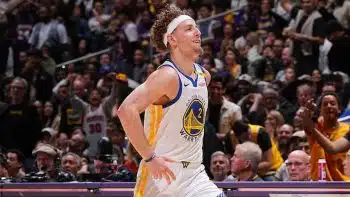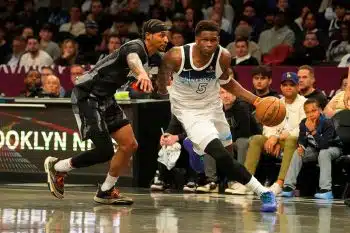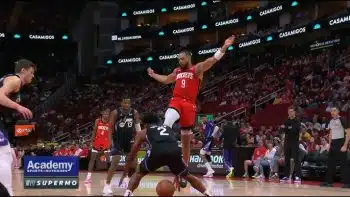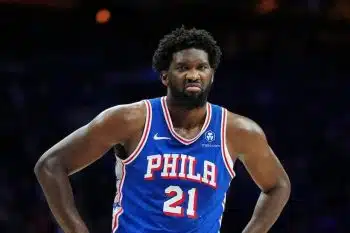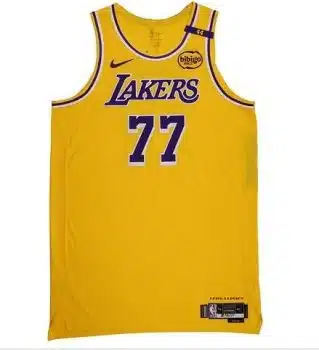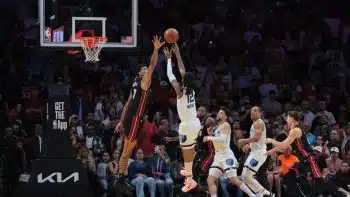NBA
NBA PM: McDermott Trade Costs Bulls Cap Space
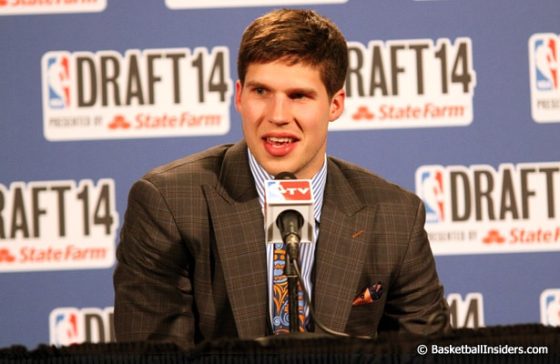
The Truth Behind the Doug McDermott Trade
When it was first announced on Thursday night that the Chicago Bulls had made a trade that would send the No. 16 and No. 19 picks in the draft for the rights to Creighton forward Doug McDermott, the initial response was pretty much this:
“Oh good. The Bulls traded two first-round picks for one so they can amass as much cap space as possible in a potential free agency push for Carmelo Anthony. Let all of us in Chicago rejoice!”
The truth, though, is something quite a bit different, and that truth became clear once it was made known that forward Anthony Randolph and his $1.825 million salary would also be coming to Chicago in the deal.
According to Mark Deeks of Sham Sports, by adding that money to McDermott’s $1.898 million cap hold as the 11th pick and a roster charge of over $500,000, the Bulls actually added money to the payroll in this deal rather than create more space for Anthony by consolidating picks. All told, Chicago has about $1 million less to offer Carmelo in free agency (assuming they amnesty Carlos Boozer) than they would have had they drafted Jusuf Nurkic and Gary Harris themselves.
So why make the trade, then? The way Gar Forman spoke at the introductory press conference, the deal was made because Chicago really, really liked McDermott. He’s been on their radar for years and is, quite frankly, a pretty perfect player for their team this year. He’s mature and accomplished enough to help right away, plus he can score the ball in a variety of situations, and putting up points was an area in which Chicago was dead-last in 2013-14.
Denver apparently sensed Forman’s desperation and moved the trade beyond just the No. 16 and No. 19 for the No. 11 and got Chicago to take back a dumb contract and send the Nuggets a future second-round pick. The answer to why the trade was made is pretty simple: the Bulls wanted him and were okay doing something silly in order to get him.
This doesn’t mean, however, that Randolph is in the team’s plans, and Forman has referred to him as a sign-and-trade piece despite the fact that Randolph already played in New York and they were so interested in him that they let him walk away to sign with Denver. Who traded him Chicago. Who now thinks there’s an outside chance that he can be used as part of a sign-and-trade package for Carmelo Anthony.
It doesn’t seem likely, and it’s even tougher when one considers that his contract cannot be aggregated with another player’s contract in trade for two months. Deeks has explained in depth that there is a sneaky way around this, and that Randolph could actually be included in a deal that would send him back to New York along with other Bulls players, but the hard part is dealing with New York’s perceived disinterest in Randolph (and Boozer, for that matter) more than it is about dealing with the money.
Randolph is a very small expiring contract, so unloading him shouldn’t be an entirely impossible task, and now that McDermott is on the roster, trading Mike Dunleavy, Jr. and his $3+ million salary next year is a little more palatable, as well. Amnesty Boozer and do something with Taj Gibson, and Chicago could have enough money to sign Carmelo outright.
If they can convince New York to do a sign-and-trade (if Chicago is where Anthony ultimately decides is the place for him), they probably lose the same players but then keep their mid-level exception, which could potentially be used on Euro-stud Nikola Mirotic.
Obviously, the sign-and-trade looks as though it would be the better deal for both teams, but it’s impossible to know how all of this will pan out. What we do know is that Chicago absolutely did not create cap space by pulling off the McDermott trade. Rather, they have $1 million fewer to offer Melo as a result, at least for now.
Philadelphia’s Still All-In For the Future
You got the sense that the Philadelphia 76ers were building toward something. With four lottery picks in the last two seasons, it would appear to be easy to turn things around in a relatively expedient way, but GM Sam Hinkie is building his team in a rather unconventional way.
Of those four picks, only one of them—Michael Carter-Williams—will have played his first full season in the league. Nerlens Noel, the No. 6 pick in the 2013 draft, sat out all last season rehabbing his knee after a torn ACL, the No. 3 pick in this year’s draft, Joel Embiid, has a couple of now-infamous pins in his foot and is likely out at least five months and the No. 10 pick this year, Dario Saric, has a new contract with a Turkish club that will keep him from the NBA for at least two years.
In other words, despite having two top-10 picks in this year’s draft, Philadelphia looks primed to come into next season with more-or-less the same awful lineup that tied a record for consecutive losses and finished with the second-worst record in the NBA.
It’s not all bad, though, as Philadelphia put together some impressive work drafting in the second round, which couldn’t have been too hard considering they owned one-sixth of the picks there. Still, they used them well, drafting highly-touted Serbian point guard Vasilije Micic, trading the rights to Russ Smith for Pierre Jackson and drafting a couple of players that probably should have been first-rounders: K.J. McDaniels and Jerami Grant.
Those are nice building blocks and should help make the team better than they were a year ago, but not dramatically so. Noel’s presence will be appreciated, but there’s a good chance Embiid doesn’t play this year. We know Saric definitely won’t.
So what’s the play here? Why submit Sixers fans to another year of brutally awful basketball? Because Hinkie and the rest of the Philadelphia front office is swinging for the fences. To be a great team and have a shot at a championship, the roster has to be flush with star talent. Rookie of the Year Carter-Williams is a nice start, but Embiid is a transcendent talent when he’s healthy. Without major injury setbacks, many believe he’ll be the best player from the best draft class in a decade.
Saric, meanwhile, has plenty of potential for NBA stardom himself. In any other year (and with the guarantee that he’d actually play for team that drafted him) he’s probably a top-five pick. With those two guys and Noel, who also would’ve been the top overall pick a year ago without his own injury concerns, there’s plenty of long-term potential here to see the Sixers grow into an Eastern Conference powerhouse.
But Hinkie is gambling that everybody pans out. In that crowd he’s got a bad knee, a bad foot, a bad back and a European address. That’s not winning championships immediately, but the Sixers keep drafting these boom-or-bust players because they think Embiid, Saric and Noel are the type of players who will eventually get them there.
We’re a long ways away from seeing whether or not this all pans out, but if Philly is back in the lottery again next year and adds someone like Jahlil Okafor or Cliff Alexander or Emmanuel Mudiay, the picture for this franchise could be incredibly rosy by 2016-17. That’s a long time away, but when this team finally all comes together and matures, it’s hard to come up with a young core featuring more elite (potential) star power.
